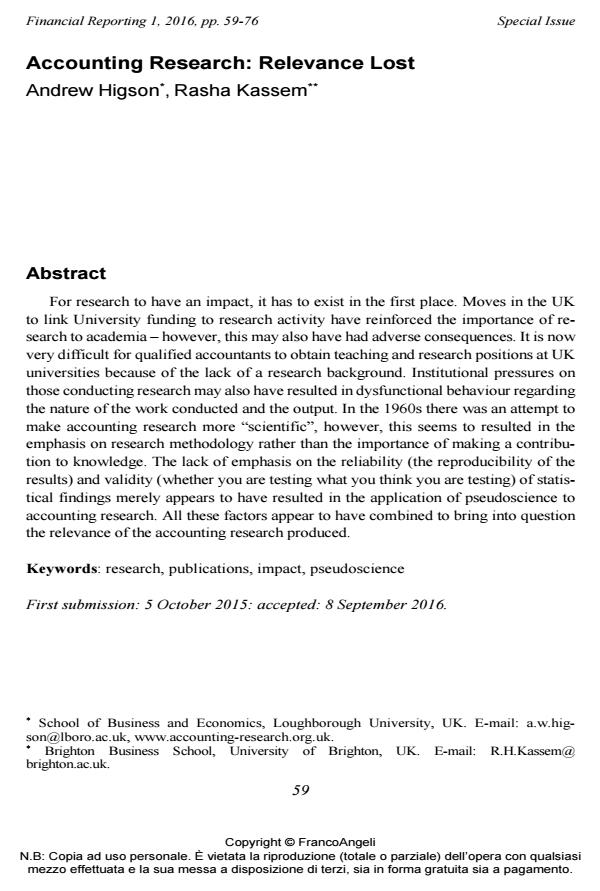Accounting Research: Relevance Lost
Journal title FINANCIAL REPORTING
Author/s Andrew Higson, Rasha Kassem
Publishing Year 2016 Issue 2016/1
Language English Pages 18 P. 59-76 File size 214 KB
DOI 10.3280/FR2016-001004
DOI is like a bar code for intellectual property: to have more infomation
click here
Below, you can see the article first page
If you want to buy this article in PDF format, you can do it, following the instructions to buy download credits

FrancoAngeli is member of Publishers International Linking Association, Inc (PILA), a not-for-profit association which run the CrossRef service enabling links to and from online scholarly content.
Keywords: Research, publications, impact, pseudoscience
- Public university research engagement contradictions in a commercialising higher education world Lee D Parker, in Financial Accountability & Management /2024 pp.16
DOI: 10.1111/faam.12341 - Computerized accounting information systems: An application of task technology fit model for microfinance Provita Wijayanti, Intan Salwani Mohamed, Dalila Daud, in International Journal of Information Management Data Insights 100224/2024 pp.100224
DOI: 10.1016/j.jjimei.2024.100224
Andrew Higson, Rasha Kassem, Accounting Research: Relevance Lost in "FINANCIAL REPORTING" 1/2016, pp 59-76, DOI: 10.3280/FR2016-001004